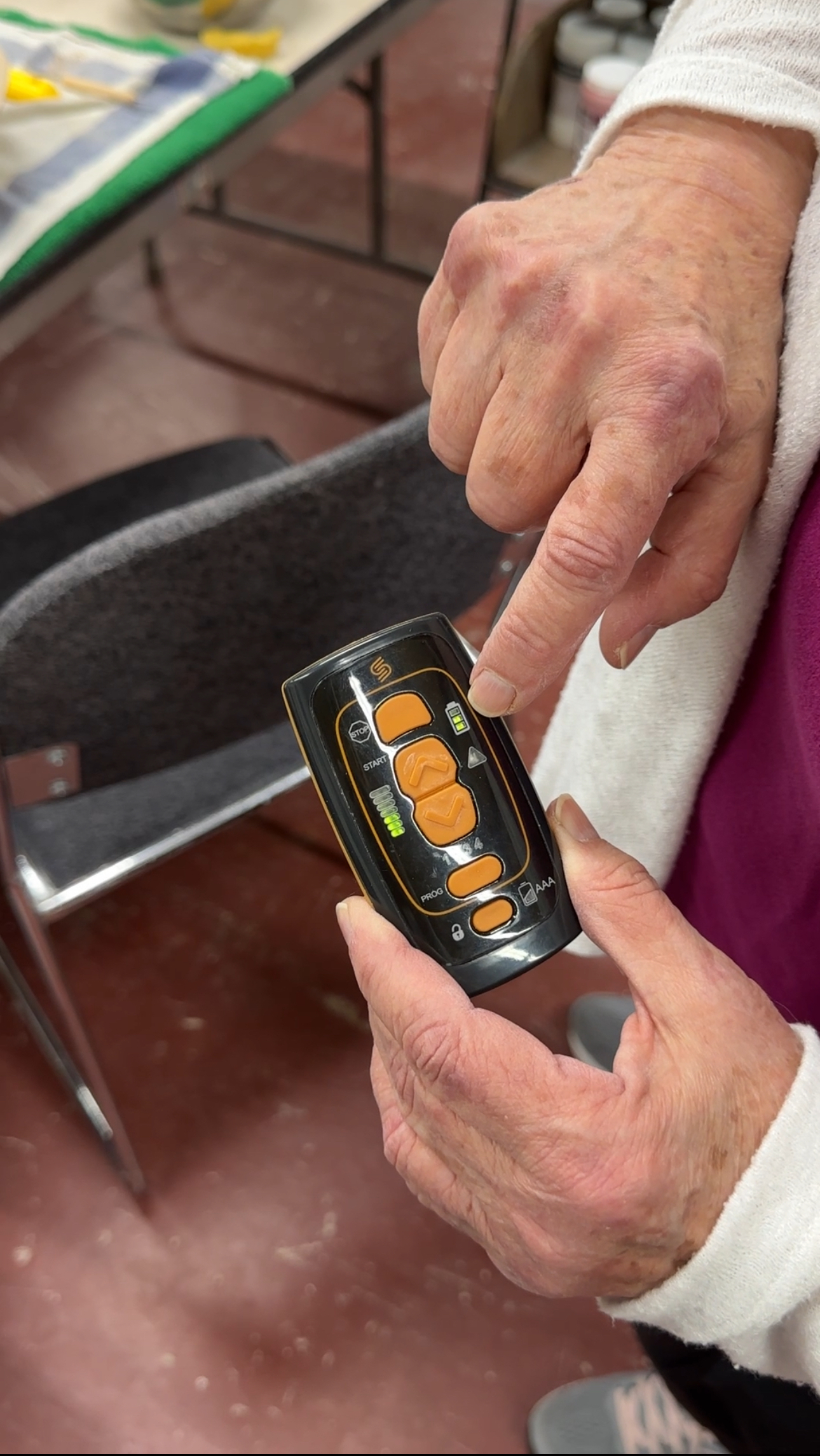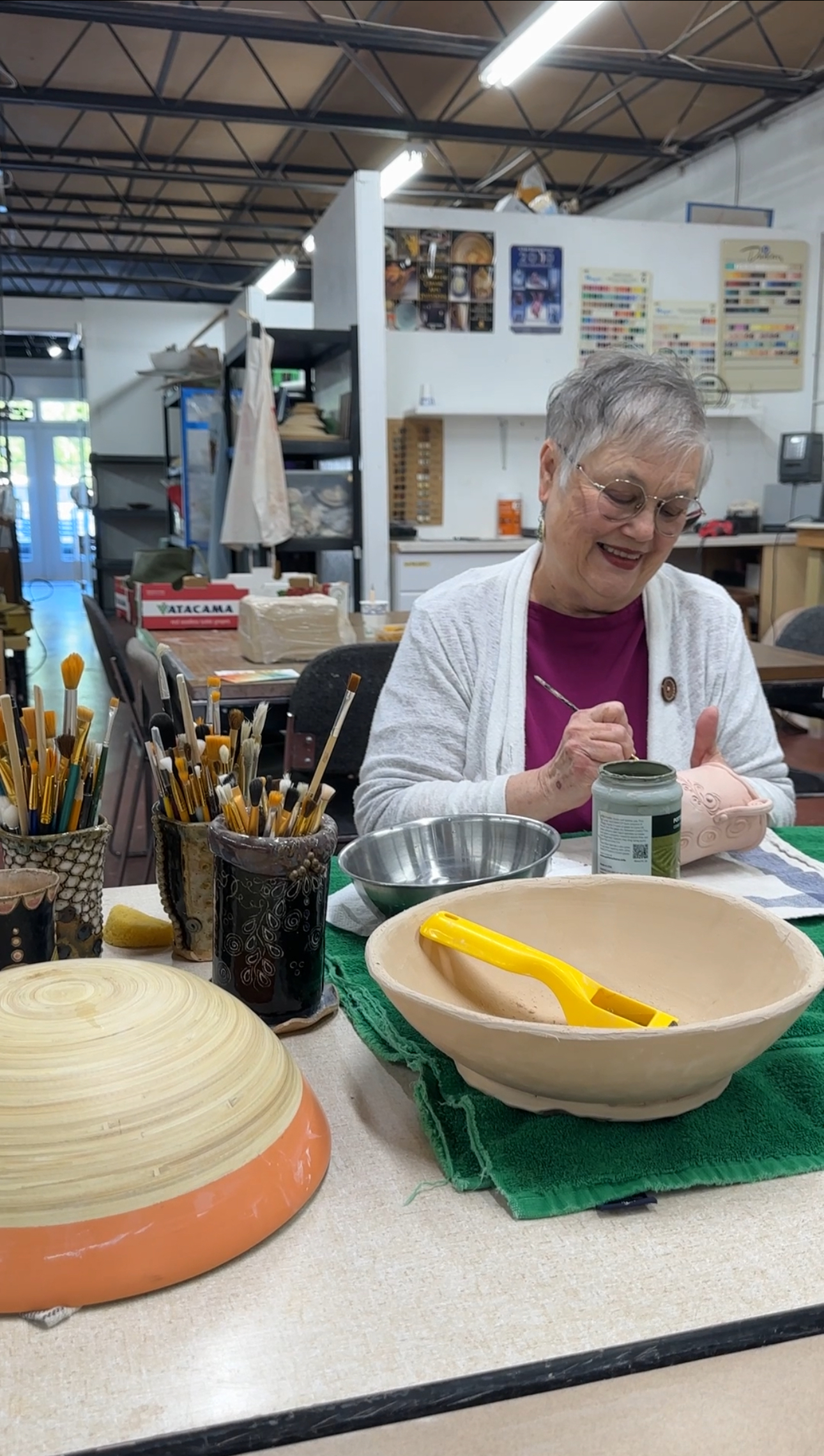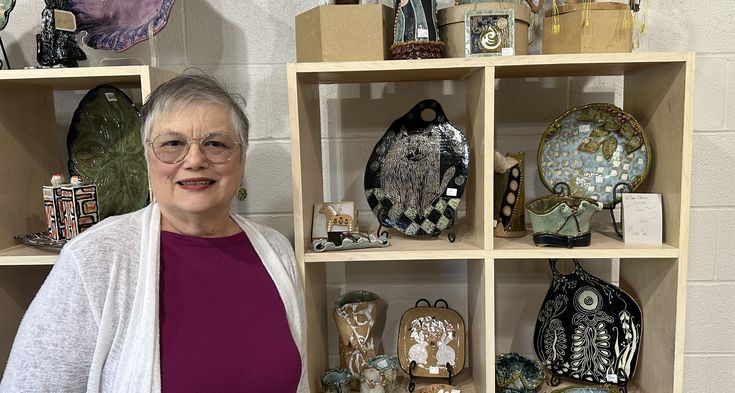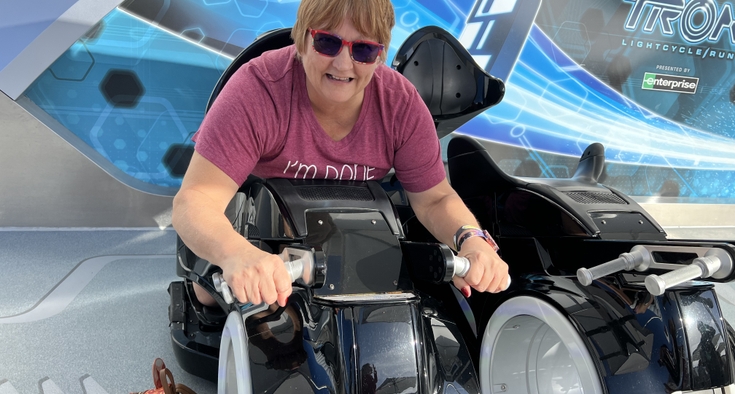Jan Stora, 75, is a Matthews-based potter who loves spending time in her studio as much as she enjoys being with her tween granddaughters, who are local. Stora (a.k.a. “Grommi”) adores her five grandchildren, three of whom live in Virginia. She came by that moniker when her oldest grandchild tried to pronounce “Grandmommy,” and it came out “Grommi.”
But debilitating back pain made those things – and more – impossible. She’s lived with degenerative disk disease and severe sciatica (back and leg pain) on her right side for decades.
In addition to those conditions, she learned last year she has spinal stenosis. Typically caused by arthritis, stenosis refers to a narrowing of the spine, which puts pressure on the spinal cord and nerves of the spine.
Stora had tried nearly everything to alleviate her chronic pain – chiropractic treatment, massages, CBD oil, physical therapy. The steroid shots she’d been getting for nine years had grown increasingly less effective.
Relief from back and neck pain.
Last December, her pain grew so intense that she could no longer walk her granddaughters to and from the bus stop or lift a 25-pound bag of clay, which she uses for her pottery. Stora, who showcases her work on Instagram as runningrabbit44, sells it at Pottery Road Studio & Gallery in Seagrove, North Carolina – the unofficial pottery capital of America.
Even short walks became excruciating late last year. “With every step, it felt like a knife was jabbing me in the back,” she said.

Her daughter, Virginia Stora, works as an administrator for a Novant Health ambulatory surgical center and had seen a Healthy Headlines story about an implant that’s highly effective for back pain and is less invasive than neurosurgery. Virginia knows Dr. James Deering III of Novant Health Spine Specialists - Ballantyne and referred her mom to him.
Surgery vs. an implant: Weighing the options
Like many people, Stora wanted to avoid surgery.
Fortunately, she was a good candidate for a spinal cord stimulator, an implanted medical device that relieves pain by sending low levels of electricity into the spinal cord. “The device continuously adjusts itself to provide therapy at the correct neural dose,” Deering explained.

These devices include thin wires (called electrodes) and a small impulse generator or battery pack. A doctor implants the electrodes between the spinal cord and the vertebrae, and the generator under the skin near the abdomen or buttocks.
Whenever they feel pain, patients use an external remote control to send electrical impulses to their spinal cord, effectively blocking the pain signal.
There are risks with any procedure, but risks associated with this one are low. They include infection; bleeding; discomfort at the battery site (which may require a revision); device malfunction; and nerve injury up to and including paralysis. Deering has never seen nerve damage in any of his patients, and he “can count on one hand the number of patients who’ve developed an infection.”
Deering has implanted hundreds of devices in patients ranging in age from their early 30s to mid-80s. He’s been implanting the Evoke spinal cord stimulator – the one he recommended for Stora – since it got FDA approval in March 2022.
It’s one of several devices Deering recommends; others include a device made by Boston Scientific. He can choose the device best suited to each patient’s condition. He recommended Evoke for Stora because it delivers the proper therapeutic dose of electricity automatically and adjusts when the patient breathes, coughs or changes positions.
The decision between spinal cord stimulation or more invasive surgery is “nuanced,” Deering said.
“If a patient has spine pathology that’s dangerous to the integrity of their spine, surgical correction is needed,” he said. Severe spinal stenosis leading to difficulty walking – or instability in the spine that can be seen on an X-ray – is among the reasons Deering might recommend that a patient consult with a neurosurgeon.
“If the primary concern is pain versus neurological injury, then these devices … often lead to better outcomes and greater patient satisfaction than more invasive treatments.”
Not everyone is a suitable candidate for an implant – someone with instability in their spinal cord, for instance. Or someone with an underlying psychological condition. Patients are required to undergo a psychological evaluation to be considered for an implant.
First, a trial
Any patient considering an implant must go through a one-week trial to determine how much relief they’re likely to get.
For the trial, the doctor – using X-ray guidance – inserts an epidural needle through the patient’s skin to place the temporary leads. Patients are limited to light activity during the trial week because doctors want the leads staying in place so the patient is getting a “fair test with the device.”
A number of variables – including other treatments tried and insurance evaluations – determine how long a patient must wait from an initial consult until the trial.
“This implant procedure is never a first step,” Deering said. “If a patient has tried a number of treatments, as Ms. Stora had, then we could probably get that patient started on a trial within two to three weeks of their consultation and do the permanent implant two to four weeks of the trial.
“The trial gives patients a good idea about how they’ll do with an implant. If a patient doesn’t feel much relief during the trial, they likely wouldn’t get much relief from a permanent implant.” Deering estimates that only 1 in 10 of his trial patients opts not to proceed with a permanent implant.
Stora was “shocked” at how instantly effective her temporary implant was. “When I woke up in the recovery area, I felt no pain,” she said. “I said, ‘Sign me up! How fast can we make this happen?’”
She remained pain-free throughout the trial. That was thanks to the remote she could adjust to get the right level of pain relief. “I used it a lot,” she said. “My wonderful rep for Evoke, Joel Barto, and I met a couple of times during the six-day trial to adjust to where my pain was.”
A week and a half after her temporary leads were removed, she received the permanent implant during a brief outpatient procedure.
That was Feb. 21, 2024. The site of the incision was tender for about a week, but an ice pack and ibuprofen helped. Barto reset her remote to pinpoint relief to the exact areas of pain. (Deering said it’s “typical for a patient to meet with a device rep a few times over the first couple of months to fine-tune programming of the device.”) As she was recovering, she had more pain on the right than on the left. So, Barto provided two different programs with eight different levels of relief she can adjust herself.
Stora carries the small remote – about 1.5 inches by 4 inches – in her purse and takes extra batteries with her when she goes out of town.
The device is activated whenever Stora feels pain. She feels a tingling sensation when it’s first activated that she described as similar to the feeling you have when a limb goes to sleep and starts to wake up. She doesn’t notice and can’t feel her battery implant.
Relief, at last
After decades of ineffective treatments, Stora finally may have permanent relief.

“These devices can work indefinitely,” Deering said. “The implanted pulse generator – the battery – is supposed to last for about 10 years before needing replacement.”
The change in Stora has been so dramatic that friends have taken note and are considering an implant themselves.
The procedure, Stora said, was life-changing. It wasn’t long after the implant that she was back in her studio at Pottery 51 in Mint Hill, a co-op of 27 local potters. “I can walk upright again,” she said. “I’m going on walks with my grandkids. I even took them kite flying recently.”
That high-flying pursuit would’ve been unthinkable last December when “Grommi” was hunched over in pain. But the Evoke implant has evoked in Stora a sense of hope and possibility.










